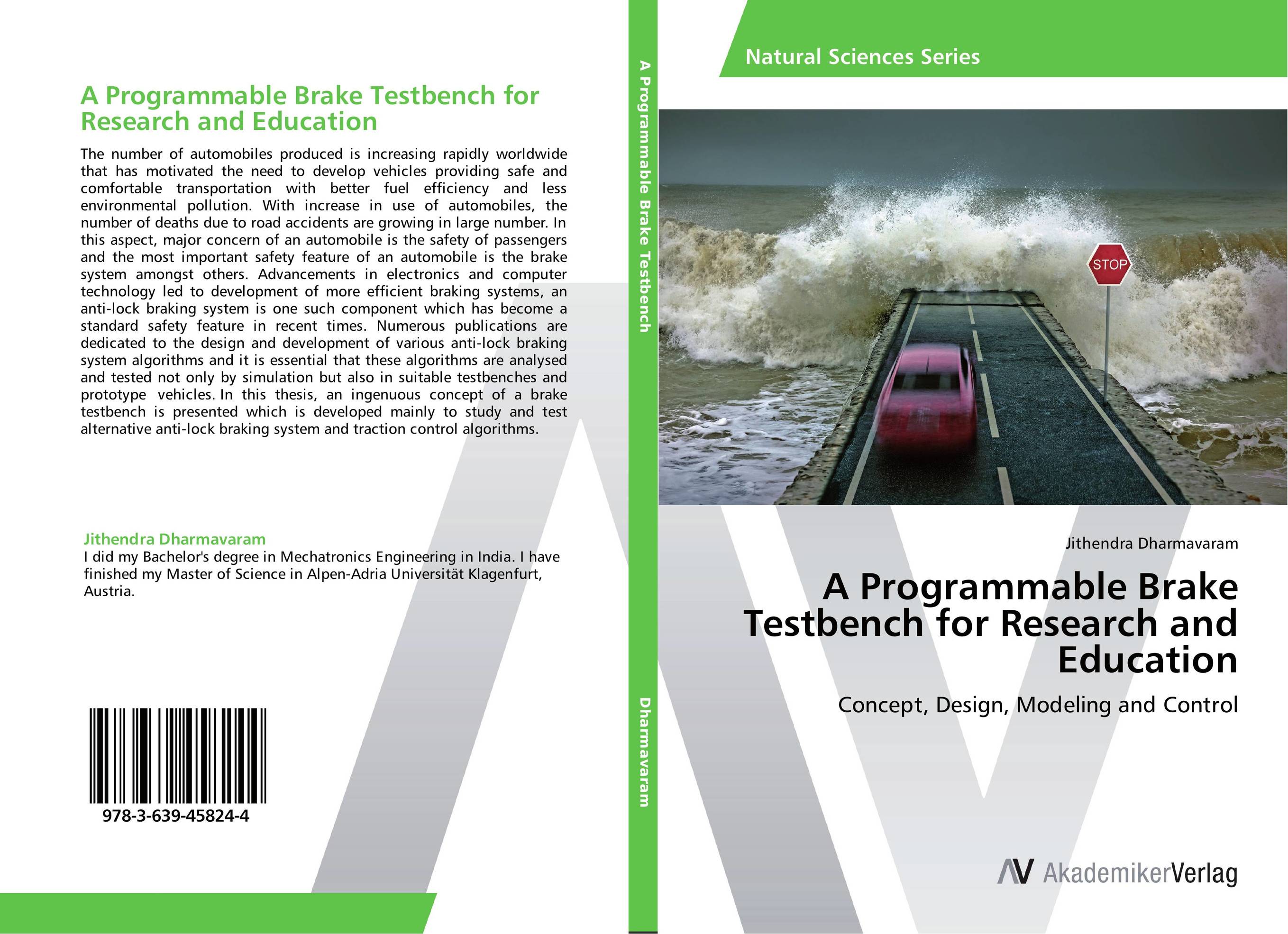| Поиск по каталогу |
|
(строгое соответствие)
|
- Профессиональная
- Научно-популярная
- Художественная
- Публицистика
- Детская
- Искусство
- Хобби, семья, дом
- Спорт
- Путеводители
- Блокноты, тетради, открытки
A Programmable Brake Testbench for Research and Education. Concept, Design, Modeling and Control

В наличии
| Местонахождение: Алматы | Состояние экземпляра: новый |

Бумажная
версия
версия
Автор: Jithendra Dharmavaram
ISBN: 9783639458244
Год издания: 2014
Формат книги: 60×90/16 (145×215 мм)
Количество страниц: 120
Издательство: AV Akademikerverlag
Цена: 27300 тг
Положить в корзину
| Способы доставки в город Алматы * комплектация (срок до отгрузки) не более 2 рабочих дней |
| Самовывоз из города Алматы (пункты самовывоза партнёра CDEK) |
| Курьерская доставка CDEK из города Москва |
| Доставка Почтой России из города Москва |
Аннотация: The number of automobiles produced is increasing rapidly worldwide that has motivated the need to develop vehicles providing safe and comfortable transportation with better fuel efficiency and less environmental pollution. With increase in use of automobiles, the number of deaths due to road accidents are growing in large number. In this aspect, major concern of an automobile is the safety of passengers and the most important safety feature of an automobile is the brake system amongst others. Advancements in electronics and computer technology led to development of more efficient braking systems, an anti-lock braking system is one such component which has become a standard safety feature in recent times. Numerous publications are dedicated to the design and development of various anti-lock braking system algorithms and it is essential that these algorithms are analysed and tested not only by simulation but also in suitable testbenches and prototype vehicles. In this thesis, an ingenuous concept of a brake testbench is presented which is developed mainly to study and test alternative anti-lock braking system and traction control algorithms.
Ключевые слова: Brake, Tyre, Vehicle Dynamic, Hydraulic, T-sum, Experimental Modeling Approach, Control System



